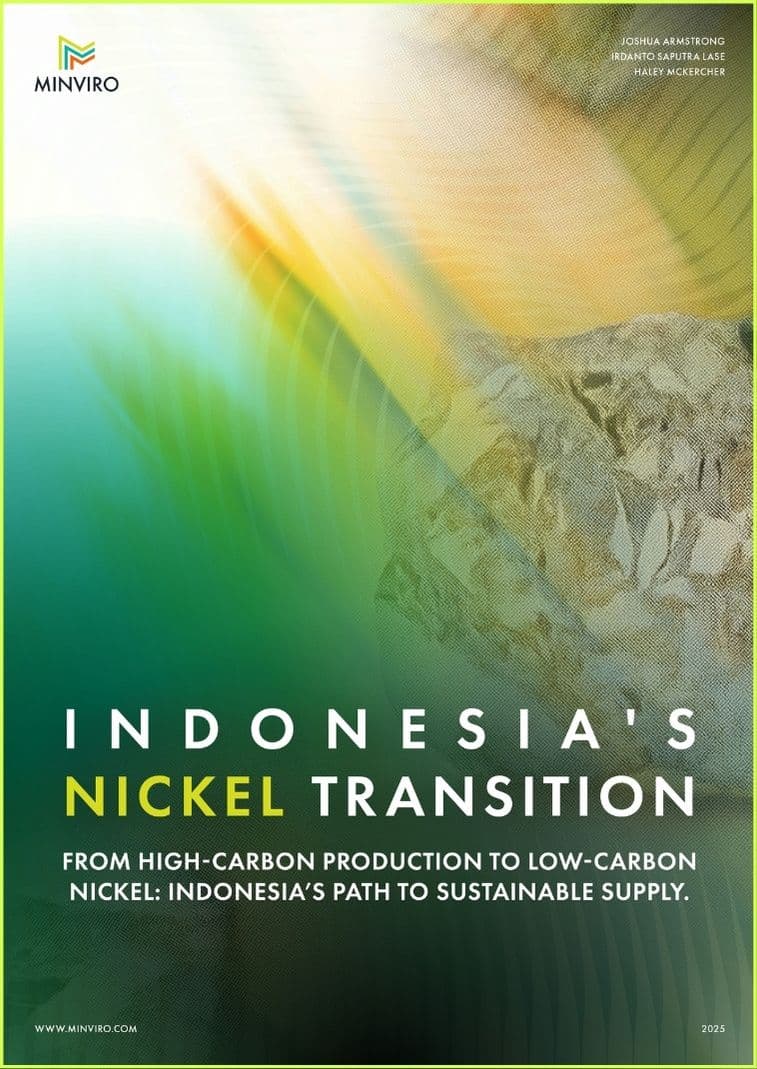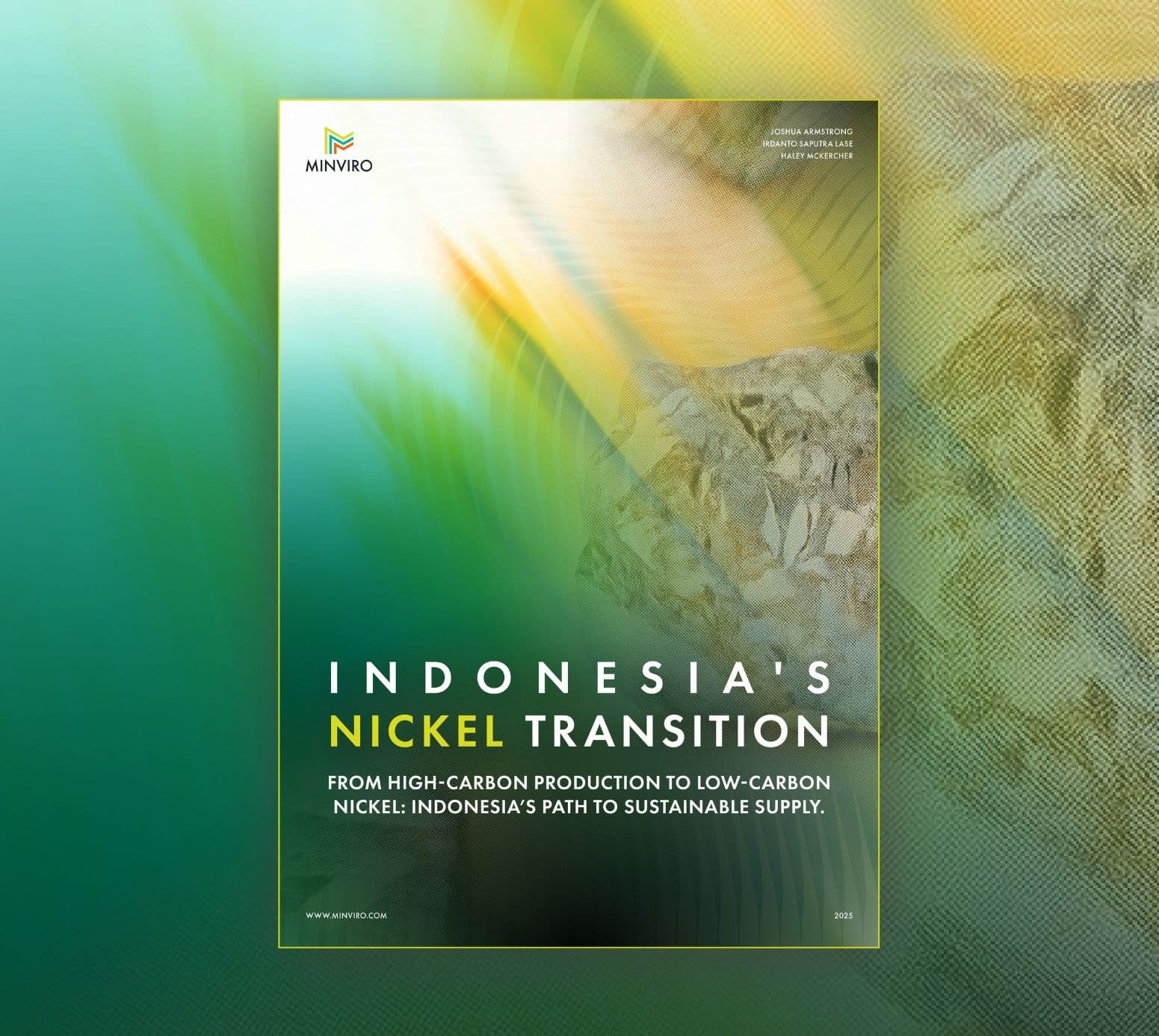- solutions
- industries
- about us
- resources
Whitepapers
Indonesia’s Nickel Transition: From High-Carbon Production to Low-Carbon Nickel
By Joshua Armstrong, Irdanto Saputra Lase, Haley McKercher
Indonesia produces over 60 % of the world’s nickel, making it central to the global clean energy transition. This white paper examines the climate impact of Indonesia’s pyrometallurgical nickel production, the depletion risks facing saprolite ore reserves, and credible decarbonisation strategies. It provides data-driven insights for policymakers, industry leaders, investors, and communities to support a sustainable nickel supply chain.
Download
The outline
Sustainable Nickel Supply: Indonesia at a Turning Point
Nickel is critical for the energy transition, but Indonesia’s current production is among the most carbon-intensive globally. This report outlines decarbonisation pathways that can cut emissions, secure long-term supply, and align with international climate goals.
Key findings include carbon hotspot analysis, reserve depletion modelling, and strategic opportunities for renewable energy integration and fuel switching.
Where are the biggest carbon hotspots in nickel production?
Nickel production in Indonesia is highly energy intensive, with specific processing stages driving the bulk of emissions. The white paper breaks down these critical points, helping stakeholders understand why they matter for climate strategies and supply chain planning.
How do energy choices shape nickel’s carbon footprint?
The carbon intensity of nickel is directly influenced by the energy sources powering production. This report explores how different energy pathways affect emissions and what this means for future competitiveness.
What risks could resource depletion pose to long-term supply?
Despite abundant reserves, rapid capacity expansion puts future resource availability under pressure. The paper examines depletion timelines and their potential impact on security of supply and investment planning.
How can Indonesia decarbonise its nickel supply chain?
There are technically credible routes to lower-carbon production. The white paper outlines how renewable energy, fuel switching, and operational strategies could reshape emissions profiles across the industry.
How will policy, investment, and technology influence nickel’s future?
Regulatory developments and market expectations are rapidly evolving. Decision makers will gain insight into how policy levers, renewable targets and technology choices intersect with Indonesia’s strategic position.
Where are the biggest opportunities for stakeholders to act?
Producers, policymakers, investors and buyers each have a role in shaping a sustainable future for nickel. The report highlights strategic entry points that can support competitiveness, compliance and long-term resilience.
download
Get access today
Fill in the form below
Download
